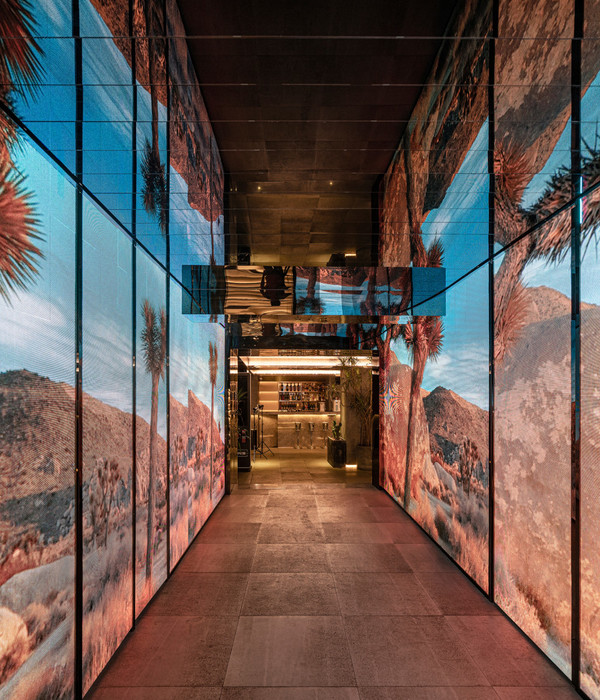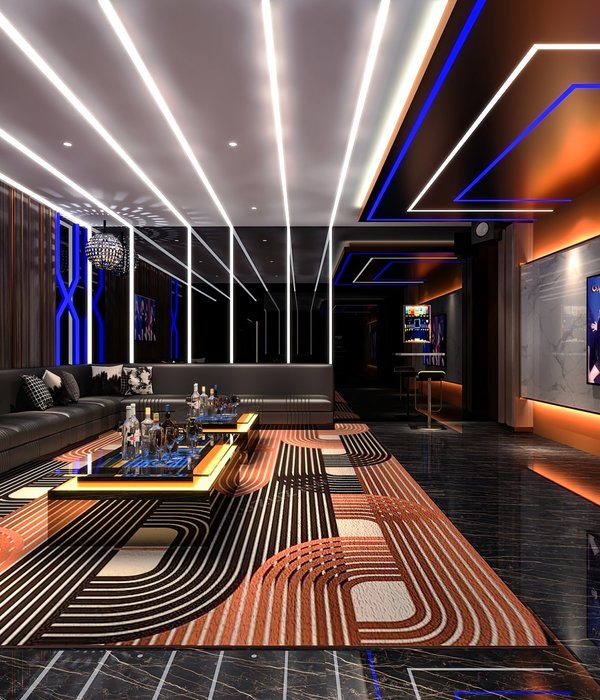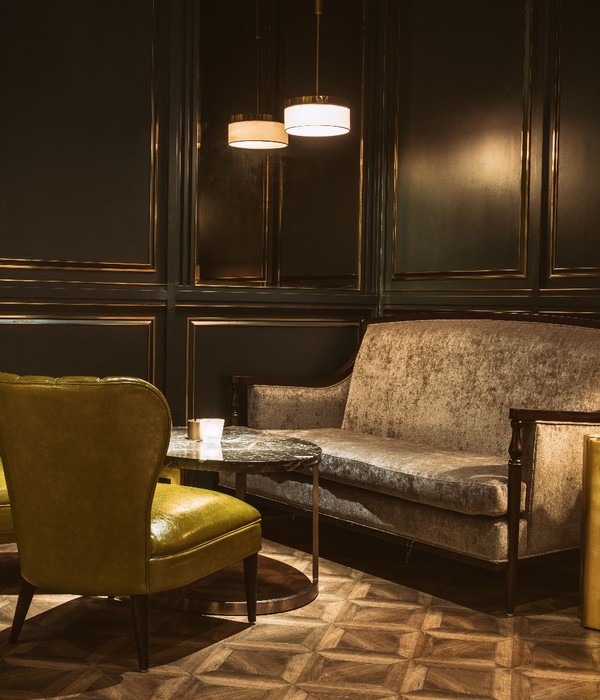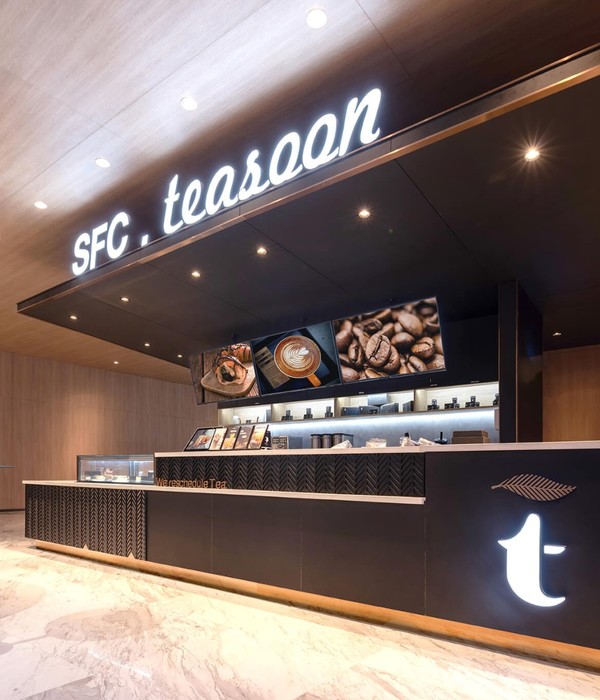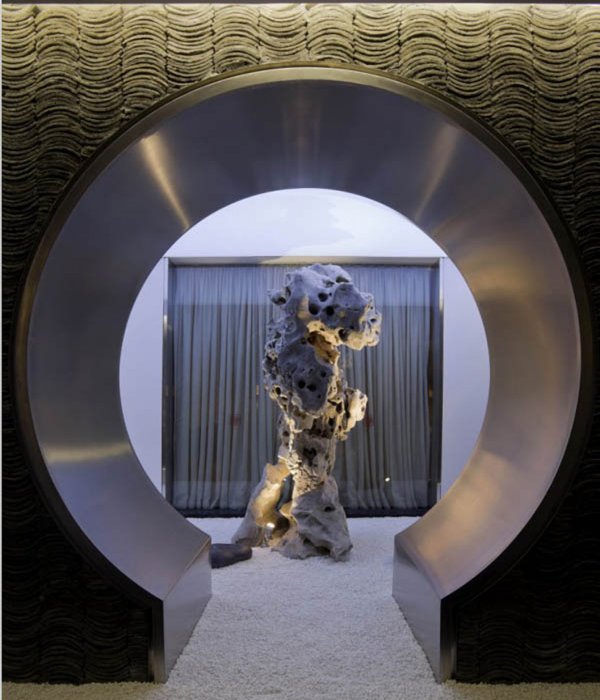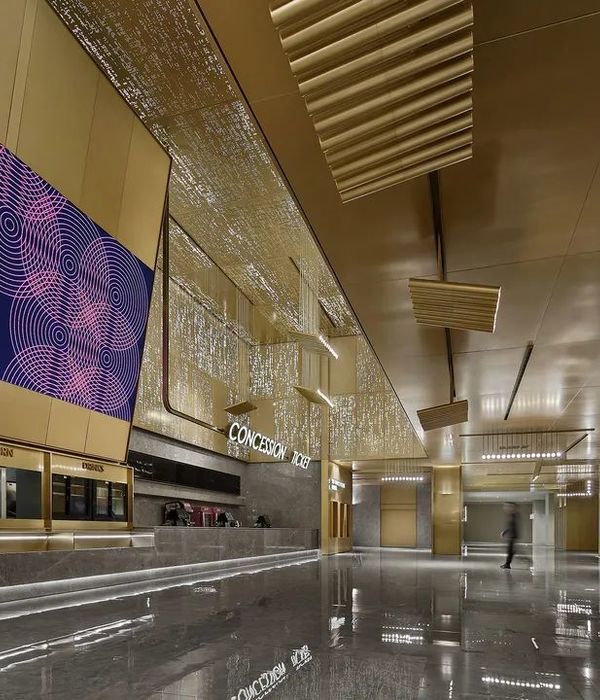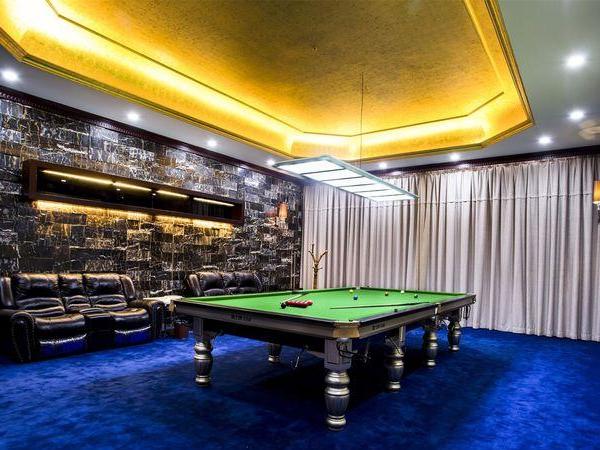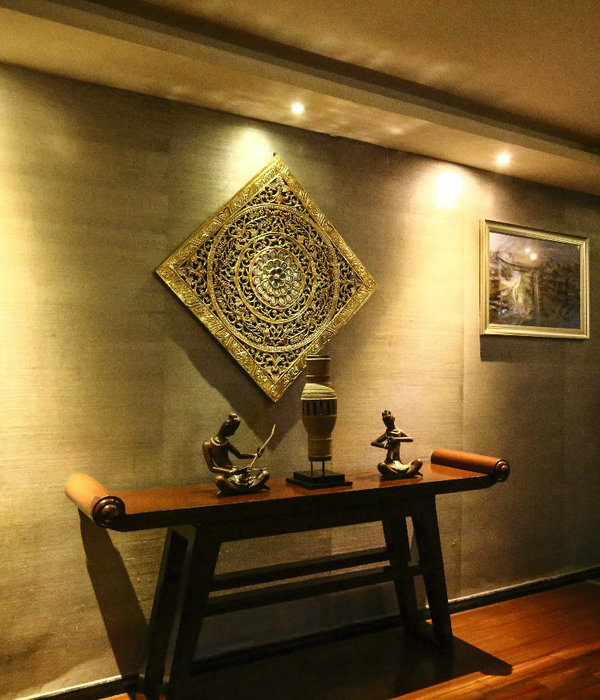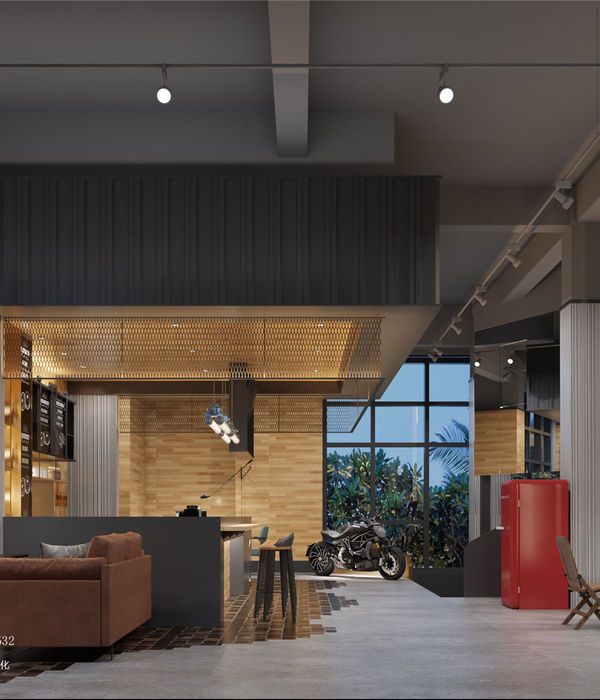Nanjing Happy Valley Theme Park East Gate - the world's largest modified plastic 3D printing architecture has recently put into use. As in mid-November 2020, once the park officially opened its gate, and after nearly half-year’s operation and observation, the design eventually reflected an influential possibility of implementing robotic printing construction technology in the future of architecture.
2020 is an unusual year. Starting from late April, with rigid medical control due to the Covid-19 circumstances, the project entered the final phase of construction. The collaboration between human designers and robotics has created a new working flow and reshaped the traditional design-to-build process. Adopting robotic printing technology, the super-scaled and high-dimensioned geometry has been realized with high efficiency and accuracy. The unique customized form will not only become a symbolic representation of Nanjing Happy Valley but also function as a perfect transition for travelers as they routine through the front plaza to major spaces of the theme park.
Enjoyment in the Post-Epidemic Era. In post epidemic era, creating a joyful space would be quite significant. How to stimulate a relaxing atmosphere, while effectively organizing the spatial circulations of entrance/exit check-in and souvenir store, would be the most urgent questions waiting to be answered.
Multi-dimensional hyperbolic surface based on computational geometry is infinitely stretching out with porous penetration, internal and external folding of the three-dimensional space enhances the continuity of the space, while the extension of the curved surface helps to attenuate the boundary lines of the building. The gate adopts a comprehensive steel structure skeleton for form-finding, and a 3D modified plastic-printed construction system on a colored outer surface, excepting the flat surface of the roof that is covered with GRP panels.
East gate of Nanjing Happy Valley is the 52-meter length and 26-meter width, with a projection area of 1352 square meters and a surface unfolded area of 1950 square meters. The multi-dimensional hyperbolic geometry realizes a heterogeneous irregular overhang span up to 30m, not only challenging the design development but also encountering construction difficulty. Covering 18,300 square meters, the plaza becomes major padding and background of the gate, a transcendent and welcoming gate, providing a unique spatial experience for tourists and visitors.
Flow, Form, Field. The scope of the project includes designing the east gate, the entrance plaza, and a gateway through the underground level. At the beginning of the design process, there were many elements that needed to be integrated with the site - from the south side of the road to the two entrances of the park, from the complex building interface on the north side to the underground gateways to the escalator; all those components together, it resulted in unpredictable traveling routines of different groups of users. It also generates different dimensions and intensities of crowd flow interference. To solve the problem, the crowd is marked as a swarm of particles moving in the site, and the motion lines are simulated by a self-organizing particle swarm algorithm based on a cluster multi-agent system; then different motion lines are transformed into vector elements so that the crowd behavior in the whole square forms a complex random vector field. Besides that, there are several fields in the environment of the site, such as vector direction field, vortex field, point field, repulsive force field, and centripetal force field.
Adopting a multi-agent system, the spatial composite force field formed by the positions in the environment could be applied to simulate the complex and changing environment in reality. During the simulation process, the east and west entrances of the site and the entrance of the square are considered as the starting points of particle motion, and the composite force field model is regarded as the force field environment of the real space. Meanwhile, the influence of the composite force field on the trajectory of particle motion and the change of the spatial distribution of the particle population is obtained through computational analysis.
Eventually, with analysis of the relationship between the crowd and the site, the simulation results based on cluster intelligence and the means of pixelated interference would transform the complexity between two fields into the textured layering of the plaza pavement, and finalize the schematic spatial planning and organization of large-scale space in the surrounding area.
Geometric Topology Engaging with Textured Skin Apart from the site, an architectural form needs to align with comprehensive elements. The entrance is surrounded by complex pedestrian flow and a variety of activities. How to integrate the form into the site while solving multiple circulations and creating the symbolic meaning, so that the geometry would be embodied with functional and aesthetic value is the main concept and mission throughout the design process. Since there is a large number of visitors passing through the ground level of the entrance and the inward extrusion of the building boundary on both sides, assuming the entrance is a positive space and the bottom side of the people flow and the buildings on both sides are negative spaces, the entrance will not be a regular polygon in such spatial relationship, but will become a multi-dimensional topological geometry floating in the site.
The intelligence of design-based form generation is reflected in the collaboration between architects and computers, where computational geometric topological prototypes occur from mathematical surfaces. A simplified equation as the following: a*sin(x)*sin(2*y)*sin(3*z)+b*sin(2*x)*sin(y)*sin(3*z)+c*sin(2*x)*sin(3*y)*sin(z)+d*sin(3*x)*sin(y)*sin(2*z)+e*sin(x)*sin(3*y)*sin(2*z)+g*sin(3*x)*sin(2*y)*sin(z)=0
Through the dynamic adjustment and final morphological results of input parameters a, b, c, d, e, g, the topological geometric prototype that fulfills the design requirements is obtained. The architect then iterates on the derivation and operation of the geometric prototype according to the boundary conditions, view frame scenes, and space accessibility requirements.
The formation of the base mesh will help to generate the built form. Once the general morphology is derived, the generation of a mesh, which conforms to the boundary from the geometric parameters would follow up. The generation process could be covered with steps of Boundary Input, Surface Skeletonization, Skeleton Subdivision, and Mesh. After all, the final result is a topological surface that can be applied for actual construction.
According to the gravity field effect, the preliminary form needs to be simulated for structural performance, optimize the location of support points, measure visual access and mechanical stability, and form the final multi-point support system. The point and line features in the topological mesh are often related to the structural support and force conditions, so the geometric meshing generated based on the topological mesh is consistent with the construction form and also allows the structural system to be incorporated into the parametric system of meshing together.
The partially protruding staircase leads visitors up to climb, in which they can experience the spatial diversity of the topological geometry at different heights and gather different views and scenarios. From a specific point of sight, the view can pass through the circular cutout in the geometry, reach the Ferris wheel at the end of the axis of the park, and create a geometrically unconventional framed view. Bypassing through the stairs, visitors from all directions can feel the spatial relationship beyond geometry.
Towards Mass Production Customization. Mass customization towards robotic fabrication has never been an ordinary achievement. The design team's precedent research and development for modified plastic printing initiated in 2014. It takes 6 years to shift from single material to composite modified plastic, from single component calculation to global finite element calculation, from layer printing to spatial printing, and from laboratory exploration to engineering large-scale demonstration. During this period, we were the pioneers to publish our technical approach to spatial topology printing when attending the RobArch international conference at the University of Sydney in 2016. Later in 2018, we showcased a spatial printing pavilion (Cloud Pavilion) at the Venice Architecture Biennale. In 2020, we achieved the design of East Gate for Nanjing Happy Valley. Time Not only the evolution of advanced technology has been recorded by time, but also the entire exploration process from the prototype, art exhibitions, to mass production construction in practice. Thus, this project valued important historical significance and prospective social practice.
Beyond the multi-dimensional geometry and hyper-object fabrication, the integration of R&D, design, and construction, as well as the intervention of advanced technologies have also become the "Himalaya" that we are keen on climbing. How to translate the topological geometry based on parametric design into a practical architectural language? How can intelligent construction under human-machine collaboration ensure high efficiency, high precision, and high quality of the construction process in the long-distance working environment due to the epidemic? The multidimensional geometries generated in complex environments also demand technical breakthroughs in construction in the digital age.
The hybrid design and construction process is a paradigm innovation in contemporary architecture and construction. The design team developed a software platform named FURobot, undertaking the translation of the building language of modules. Not only the geometric planning and panel division under construction constraints are maintained, but also the capability to translate the building geometry instantaneously into the building robot processing path planning. We developed an adaptive inverse deformation algorithm for local geometric models of complex models, translating continuous surfaces with unfolded areas up to 1950 meter square into more than 4,000 curved sheets for prefabrication in the factory, and generating printing paths remotely, with one of the designer members in Malaysia during the epidemic, and the long-distance collaboration to realize the final design and robot control files. The engagement of human-robot collaboration makes it possible to fulfill the architect’s creativity and mass production customization in construction.
Pixelated Colors. Six shades of pink were designed for each segment by the algorithm of colored pixel collage. These colored panels as a metaphor, representing the variety of activities taking place in the Happy Valley, transforming high expectations from visitors with a welcoming gesture as a grand opening. After repeated material testing, especially a decade of anti-aging material performance experiments, the team has precisely developed an outdoor UV-resistant color-modified plastic material that can achieve 256 colors with precise parametric color printing technology.
The complexity of the geometric forms and multiple colors demand a high control of success rate and precision. Therefore, the key of this project not just aiming for the largest size, but also highlighting the team's latest progression in large-scale robotic printing technology. After modeling the units with geometric and color variability, the self-developed FURobot software is then applied to program 3D printing algorithms for each panel that can be used for machine recognition and real-time feedback. Each panel is prefabricated and printed by a robotic in the factory, and transported to the site for modular composite installation with a numbering system.
The construction site cooperated with the numbering system, which also applied multi-quadrant, multi-objective composite CNC installation technology to precisely position each 3D printed panel through the CNC laser positioning and scanning system; meanwhile, it helped to realize real-time monitoring remotely proceed by the colleagues from Shanghai office. The project construction level of high efficiency, high precision, and high quality was still achieved during the epidemic.
The complex environment of cross-construction work on-site results in the great difficulty of spatial coordination of multi-dimensional topological forms. Building a site for digital construction, and intelligent sensing and feedback system allows daily access to construction data, meanwhile brings assurance of dynamic prediction of installation accuracy and hybrid dimensions for intense construction periods.
The autonomous perception system of the digital site ensures the realization of complex multi-dimensional topology, the digital birth shape and construction complement each other, the entrance gate and the surrounding elements are coherent and integrated, and through the change of scale and novel materials, the visitors complete the transformation of the city to the theme park's state of mind in the gradual change of space, transforming the traditional process of purchasing and checking tickets into the prelude to start a wonderful journey, greatly enhancing the experience of the traditional ticketing process is transformed into a prelude to an amazing journey, which greatly enhances the sense of participation and joy.
Material Computing and Robotic 3D Printing. The Happy Valley Gate project, as one of the world's largest 3D printed architectural practices of modified plastics in terms of size and scale, encountering a fundamental problem in applying large scale 3D printing: the dual requirements in scale and precision are almost beyond the limits of physical characteristics of 3D printed materials. This project provides solutions to this problem from two perspectives: global optimization and cellular computation. Globally, a surface subdivision optimization algorithm derived from a 3D printing model guarantees a reliable and precise outcome of overall panel division.
The deformation prediction and anti-deformation printing technology developed for a modified plastic achieves efficient geometric calculation of material properties. Regarding cellular computation, the complex geometry and respective characteristics of each panel, aided by material finite element calculations, can only be achieved by a pathfinding tool developed by robotics reaching performance-optimized results. In this Project, the global skin printed panels achieved sub-centimeter level accuracy at an overall building scale of 52m in length.
Material is tangible, while the construction is invisible. Beyond geometry, indeed, is a renovation that challenges traditional design processes and a way of interpreting a new experience. Safety of breathing and healthy socializing will no longer be the major focus in the post-pandemic age; instead, the evolution of advanced technology and culture will be the potential themes to explore. Under the global post-pandemic circumstances, technology evolution merging into traditions and culture might be the trigger for reactivation in a post-humanism era.
{{item.text_origin}}

